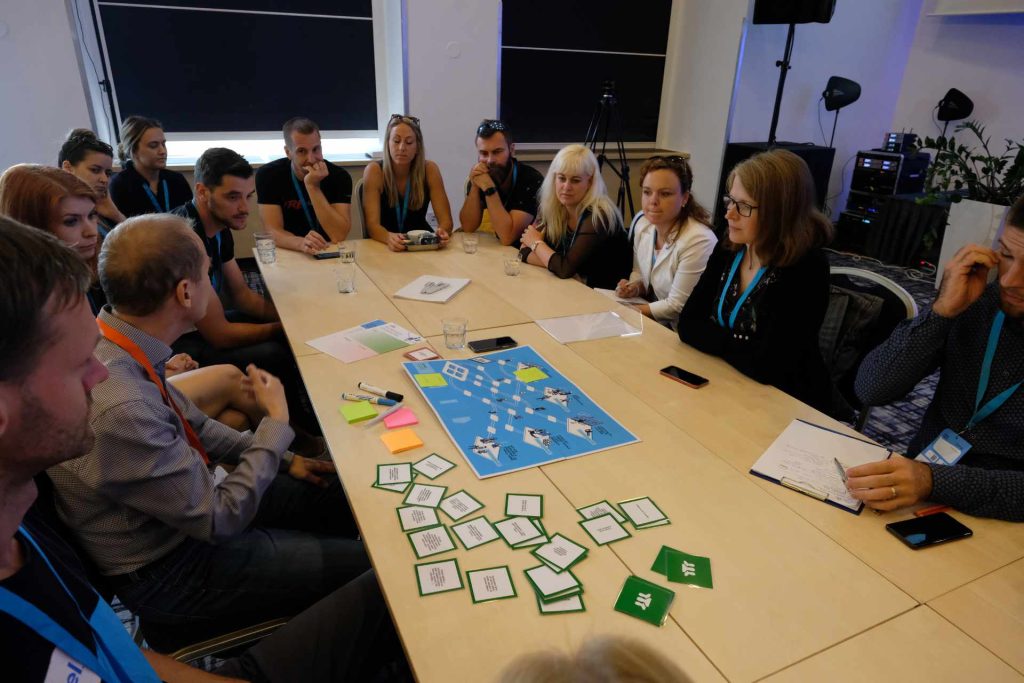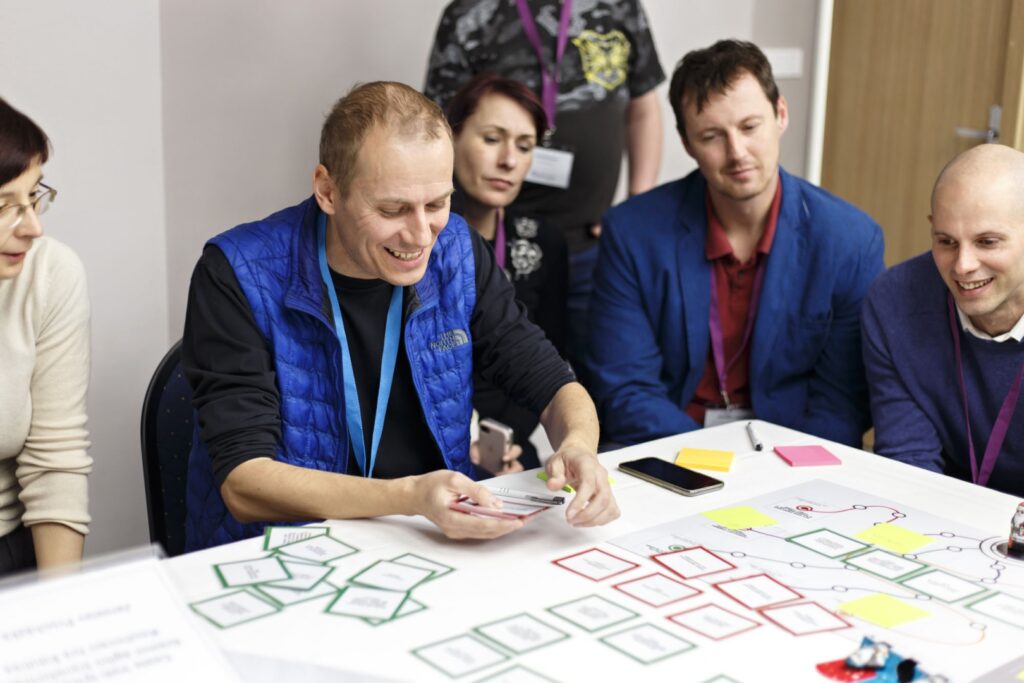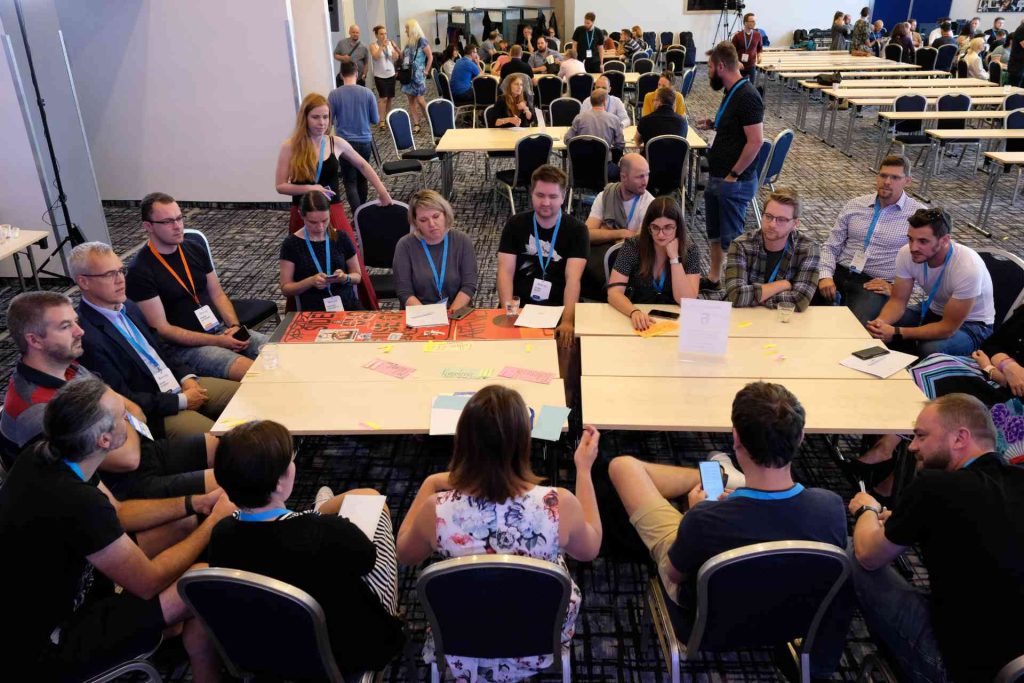ANNOTATION
World Café
The “World Café” method allows groups of participants to share experiences and opinions and to seek answers to questions that are defined in advance. There will be 7 thematic tables, including experienced discussion moderators. Time will be allocated for each discussion for 25 minutes. During the given time for the World Café, you can complete a total of three discussions. The goal of the method is not to arrive at clear conclusions, goals or plans at any cost. Rather, it serves as an exchange of ideas, a broadening of perspectives on the topics at hand.
Table number 1
Evidence Based Product Development: Pitfalls, Challenges and Opportunities
Joe Justice
If you are into making your product development more tangible come to this session and share your perspectives or perspectives from your team and company on what (not) to do when it comes to evidence based approach.
Table number 2
Agile Portfolio Management: Doing it
Joe Krebs
Netflix coined the phrase “highly aligned, loosely coupled” to describe well-tuned agile portfolio management across a big organization. In this World Café discussion, let’s look together at some common characteristics found among high-functioning agile portfolios.
Table number 3
Scalable product development
Miroslav Žebrák
Product development has evolved rapidly since the inception of the Agile Manifesto in 2001. Product teams now include new and previously neglected roles that play a key role in all phases of product development and support. With the increase in collaboration between different teams within a product or organization, the question arises: How can we effectively organize communication, management and collaboration so that everyone is informed, but at the same time has sufficient autonomy and motivation?
Let’s share together which principles have worked well and which experiences we would rather not repeat.
Table number 4
How to approach Product Discovery?
Lukáš Gregovský
Today, product owners on all sides are receiving requests to modify their products or to create entirely new products. These requests need to be analysed, prioritised and prioritised before they can be implemented, so that they can be properly included in the roadmap or backlog. Let’s discuss and share experiences on how to achieve this using Product Discovery.
Table number 5
How to use #MobAI in the Czech Republic and Slovakia?
Ondřej Bačina
Joe Justice mentions a key concept in the keynote presentation – #MobAI. The aim of this table is to discuss how you have understood #MobAI and how to grasp it practically in our country. Have you worked with a similar format before? What are the barriers to its implementation, or are there contexts where it doesn’t fit? What to do as first steps and what reactions can we expect in the group/company?
Table number 6
How to apply performance to your team, organisation and how to approach stakeholders and then how to communicate with them
Lukáš Míka
My product, my metrics, my stakeholders. How to start, what to watch out for and how it is done elsewhere. How to make a functional tool out of all this that will help me do the product owner’s work better and more efficiently…
Table number 7
PM and work with data
Jiří Tůma
What data to look for and where? Quantitative and qualitative data – why distinguish between them and what can they do for us? What tools and knowledge to have in the toolbox – do I need to know SQL?
Table number 8
Product-led Growth
Adam Krbušek
Product-led Growth (PLG) is a strategy that has gained popularity in recent years. Companies such as Miro, Slack, and Zoom have leveraged it to become unicorns. What is it all about? Essentially, PLG is a business strategy where the product itself serves as the primary driver of the company’s growth. Are you interested in how it works? How to get started, or what are the best practices? Let’s discuss how to implement PLG, the challenges you may face, and ways to overcome them.
Table number 9
Behavioral design or just cheap tricks?
Petr Štědrý
Everyone would like to change the behaviour of their customers or users. How well do you know people who buy or use your products? What tools do you use to influence behavior change? And can you stay within ethical boundaries without using simple psychological “tricks”?



